Added 1 new A* page:After all that sciencey stuff I posted yesterday I only had time for a fairly quick brush and ink practice session, which yielded this:

Kind of a Rosie the Riveter thing there! It was actually kind of a costume study for a hairdo I'm thinking of having Selenis sport around the end of episode...uh...15. I'm not sure why that went with a rather muscular neck, but hey! Anyway, it's definitely a ton of fun to do glossy black hair with ink and brush, so maybe I'll have to have her keep that look for a while. >_>
~~~~~~~
Well I did not listen to my own warning, and promptly came across more neat space science stuff on the internet that I can't resist talking about. Dang!
This was because after yesterday's stuff about radio telescopes, I was thinking to myself "doesn't NASA have a particular big radio telescope" which was silly because they don't, particularly. But that silly search of NASA's site yielded an interesting supermassive black hole article! It describes how back in May of this year, radio telescopes captured the best-ever (at the time, anyway) image of jets coming off the magnetic poles of a supermassive black hole.
The galaxy thus captured was Centaurus A, the fifth brightest galaxy in the sky, and, at 10-16 million light years distant (the precise distance being the subject of much debate, probably due to its peculiar appearance preventing it from being easily compared with other galaxies), one of the closest radio galaxies--galaxies emitting a lot of radio activity--to Earth. Like Arp 220, the nearest "ultraluminous infrared galaxy" (many fewer of these, though; Arp 220 is 250 million light years away), Centaurus A is thought to be the result of a rather violent merger of multiple galaxies; this coming together of material from two galaxies (and another several hundred million years earlier) may have sparked the active galactic nucleus around its central supermassive black hole, which is shooting off two jets of material at *half the speed of light*, extending outward for over a million light years.
Here's that best-ever radio image of Centaurus A's jets:
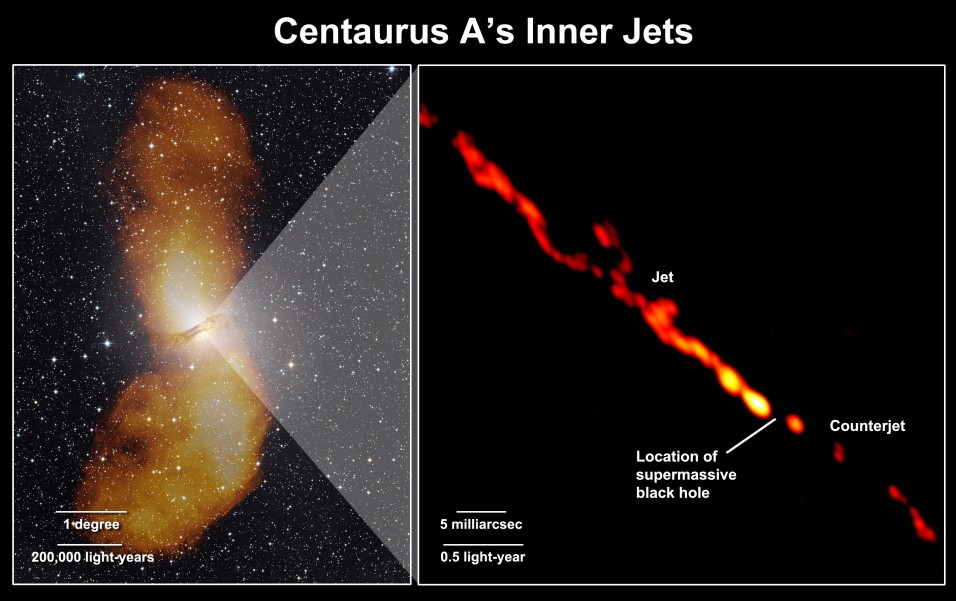
image by (left) Capella Observatory (optical), with radio data from Ilana Feain, Tim Cornwell, and Ron Ekers (CSIRO/ATNF), R. Morganti (ASTRON), and N. Junkes (MPIfR), (right) NASA/TANAMI/Müller et al. (source)
The left image shows the huge radio-emitting clouds shot out by the jets to a distance of 1,000,000 light years around the galaxy, which is shown in visible light. The right image is the detailed radio image of the jets, with the implied supermassive black hole pointed out between them ("radio-emitting features as small as 15 light-days can be seen, making this the highest-resolution view of galactic jets ever made"). Thar she blows! If we could see those jets with our own eyes, Centaurus A would look "nearly 20 times the apparent size of a full moon" in our night sky!
That detailed image of the jets was picked up by the TANAMI array ("Tracking Active Galactic Nuclei with Austral Milliarcsecond Interferometry" :o), a group of nine radio telescopes on four continents, centered around Australia, and coordinated by computer interferometry into one really big radio telescope, much like what is now being done on a much larger scale with that new ALMA array in Chile, although the individual TANAMI scopes are mostly much larger than the eventually sixty-six 12 and 7 meter scopes of ALMA.
The largest radio telescope in the TANAMI project is the whopping 70 meter scope at the Canberra Deep Space Tracking Station in Australia, the only NASA Deep Space Network site in the southern hemisphere, the other two DSN complexes being the Madrid Deep Space Communication Complex in Spain, and the Goldstone Deep Space Communications Complex in the Mojave Desert in California; the primary mission of these stations is to provide communication with spacecraft, but their secondary purpose is to probe the cosmos with their huge radio telescopes--each one has a 70 meter dish, and a number of smaller ones (20-30m) as well. Here's a view of the Canberra site, with the 70 meter telescope pointed directly upward in the middle:
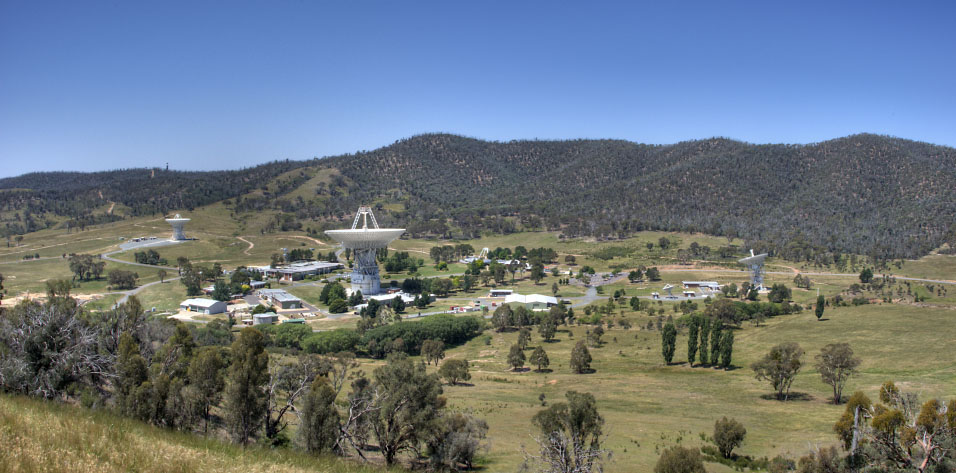
image by Ryan Wick (source)
Constructed "in 1973 and enlarged in 1987"..."it is the largest steerable parabolic antenna in the Southern Hemisphere."
Okay well that's great, but let's have some more pretty pictures of Centaurus A!
X-ray (blue, from Chandra) and microwave (orange) composite view showing the jets and the material they're blowing far out into intergalactic space:
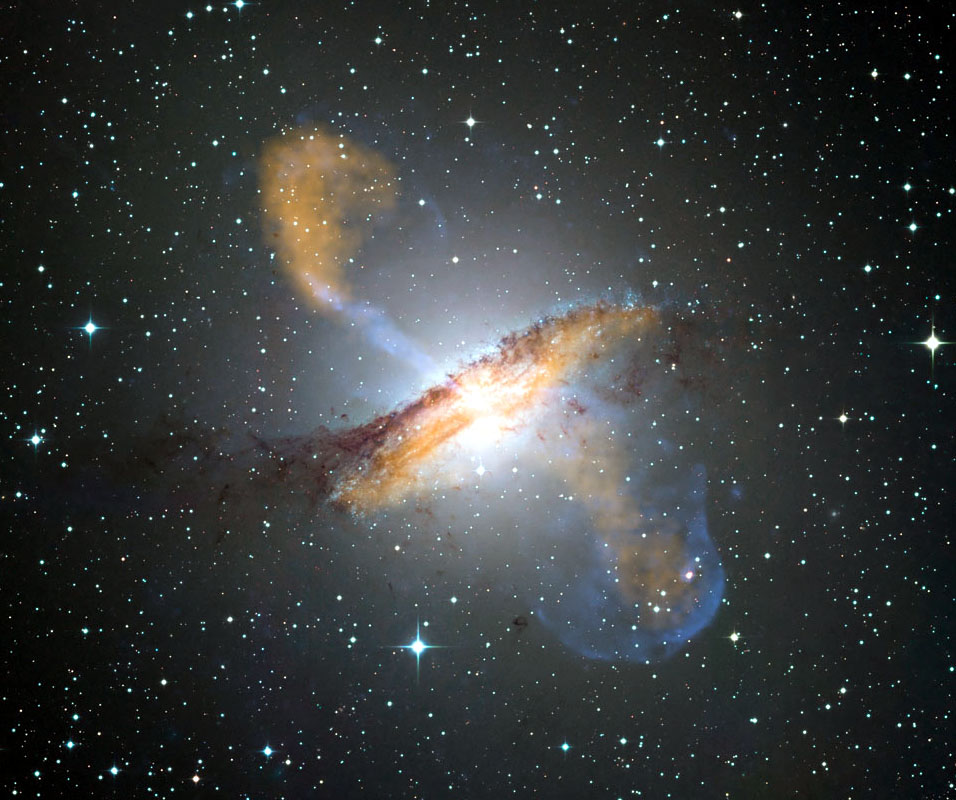
image by ESO/WFI (visible); MPIfR/ESO/APEX/A.Weiss et al. (microwave); NASA/CXC/CfA/R.Kraft et al. (X-ray) (source)
General view of the galaxy in visible light by the ESO, showing the unusually prominent dust lane in front of the galaxy:
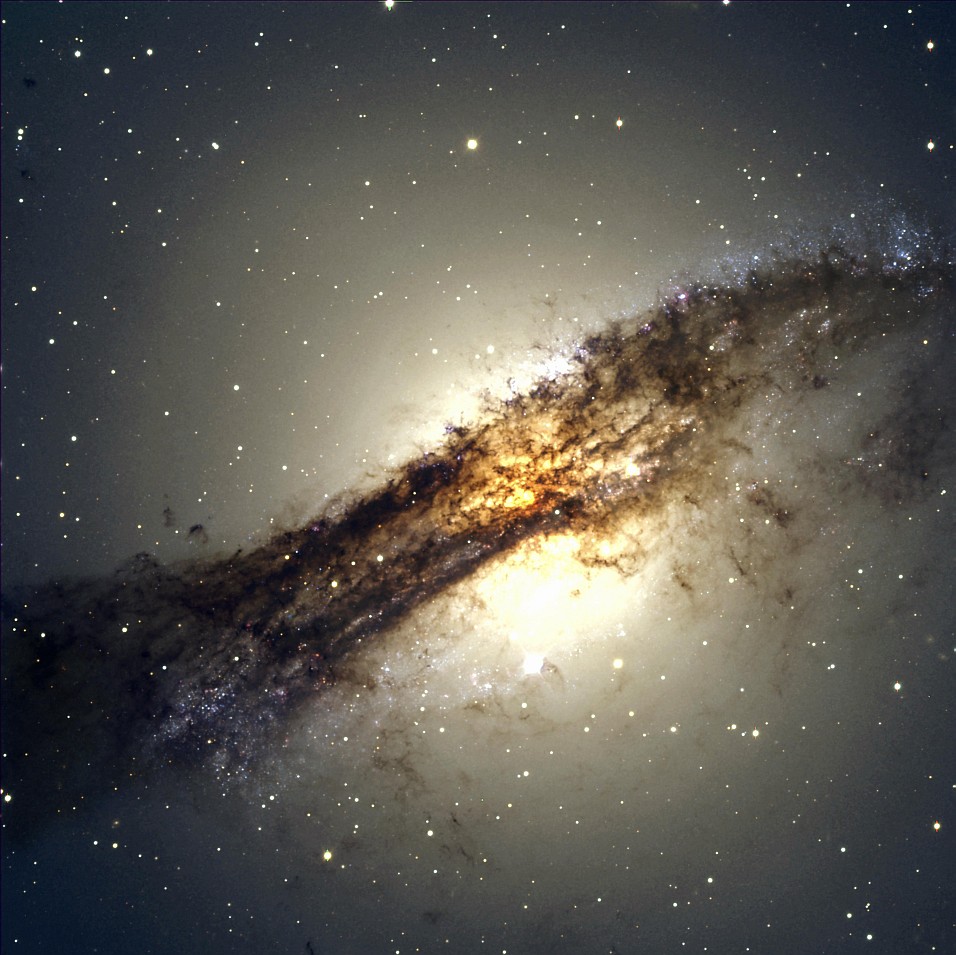
image by ESO (source)
Ultraviolet (the blue/purple, I think) and near-infrared composite of the galaxy's center by Hubble; the ultraviolet light comes primarily from young stars in the galaxy's numerous star-forming areas:
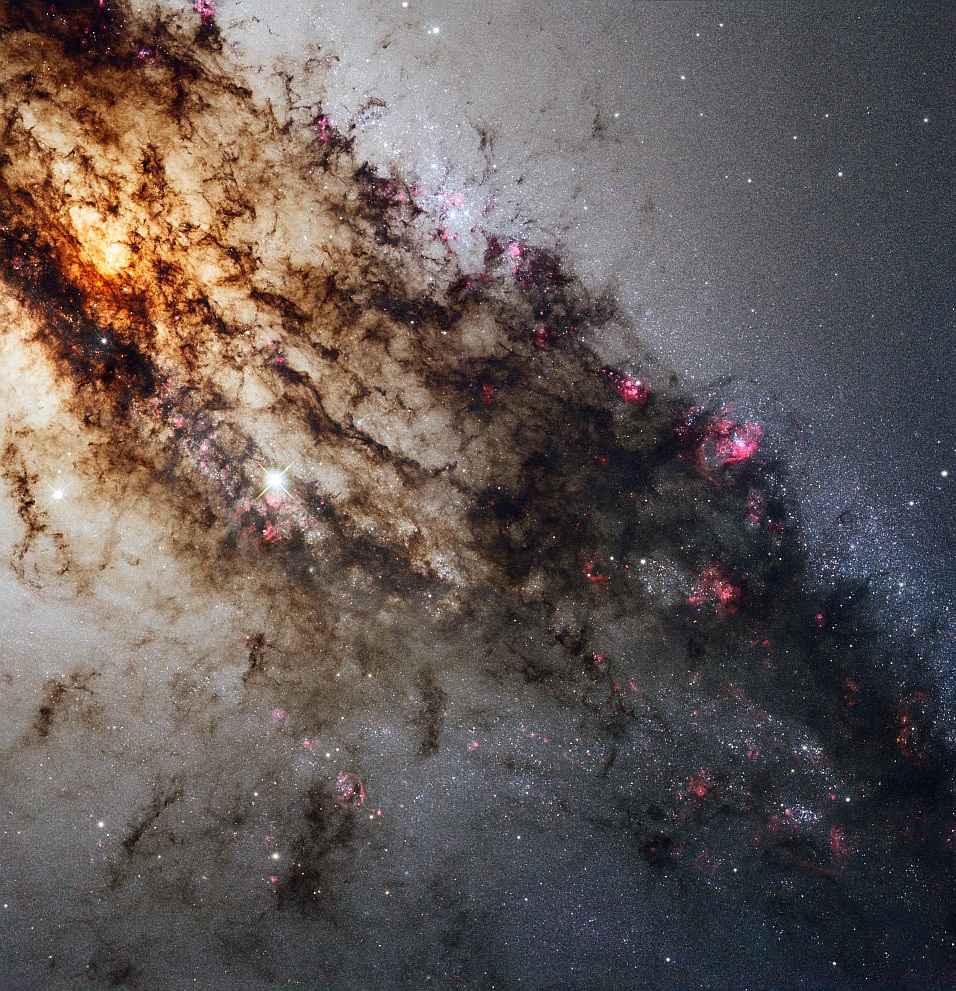
image by NASA, ESA, and the Hubble Heritage (STScI/AURA)-ESA/Hubble Collaboration (source)
Ohh man this is getting bandwidth heavy! Tell me if I should stop. :P
Hubble view of the dust disk in front of the galactic core; I think this is another composite of some kind:
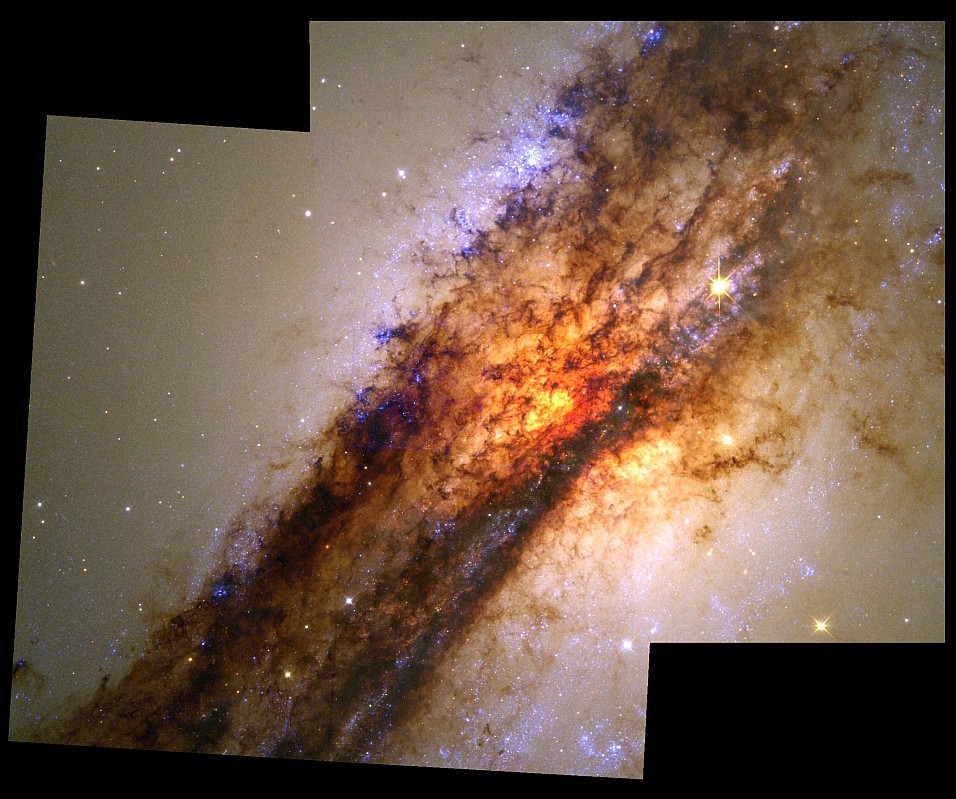
image by HST/NASA/ESA (source)
A rather fascinating view of the center in near-infrared, which cuts through the dust lane to reveal "the parallelogram-shaped remains of a smaller galaxy that was gulped down about 200 to 700 million years ago":
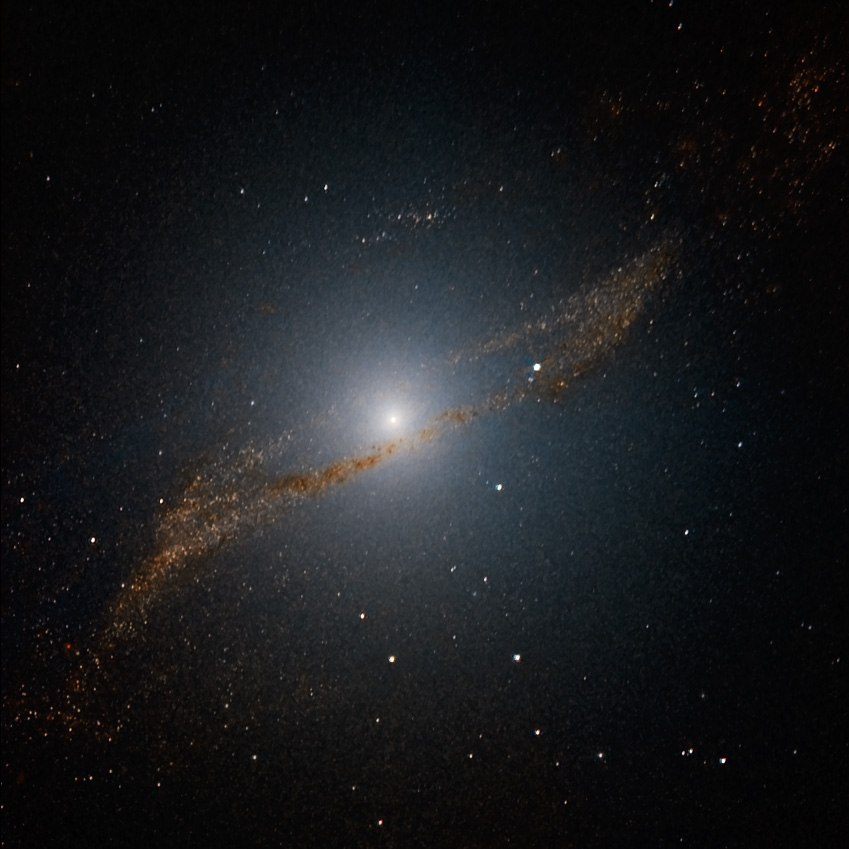
image by ESO/Y. Beletsky (source)
That same inner galactic remnant seen in infrared by Spitzer; you can also see the jets as a dark red beam cutting across the bright center from top left to bottom right:
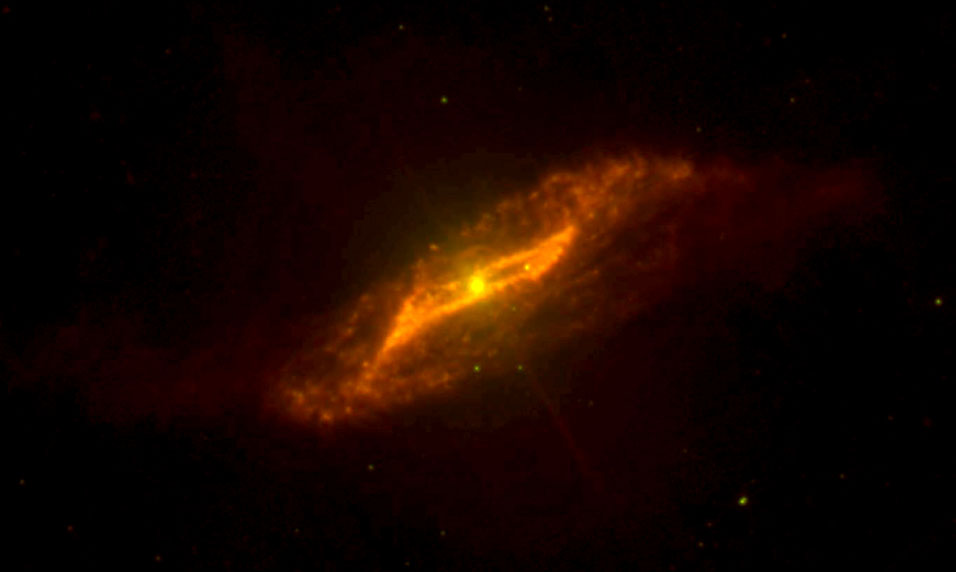
image by NASA/JPL-Caltech/SST J. Keene (SSC/Caltech) (source)
And so as not to leave out any of NASA's active Great Observatories (the fourth was the Compton Gamma Ray Observatory, deorbited in 2000), here we see one of the jets in X-rays by Chandra:
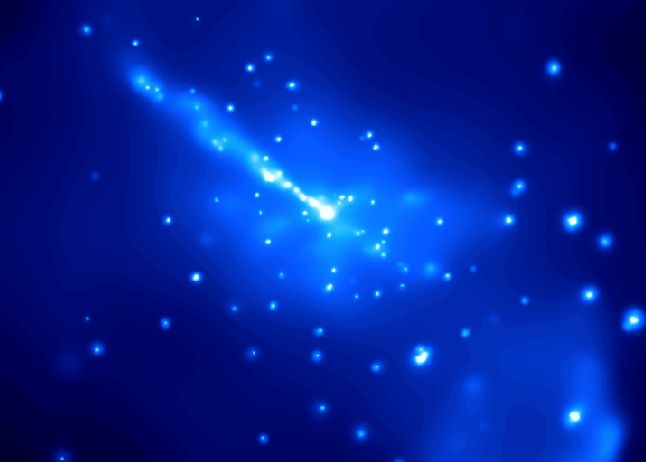
image by NASA (source)
Must...stop...looking at...internet... =p
|
